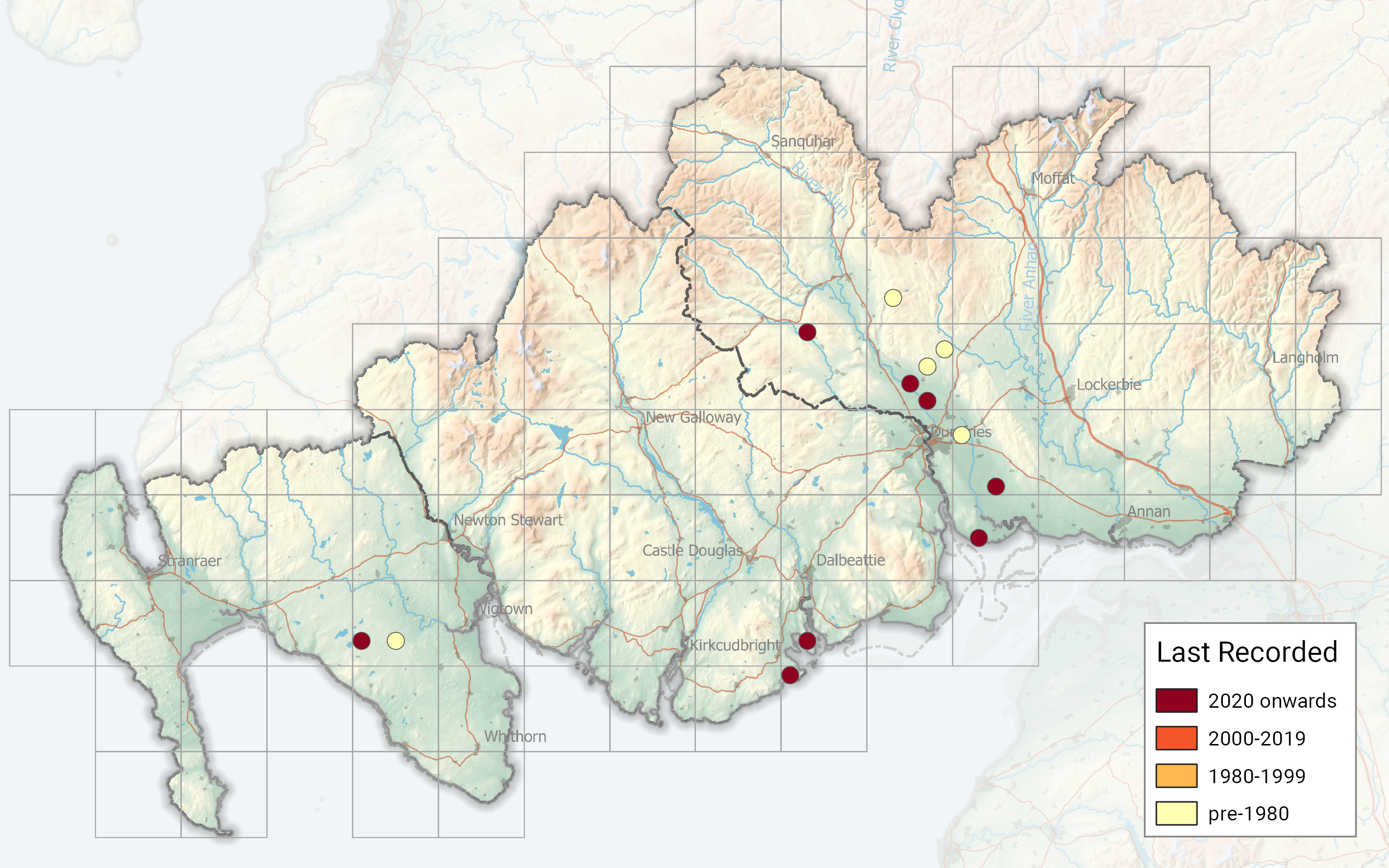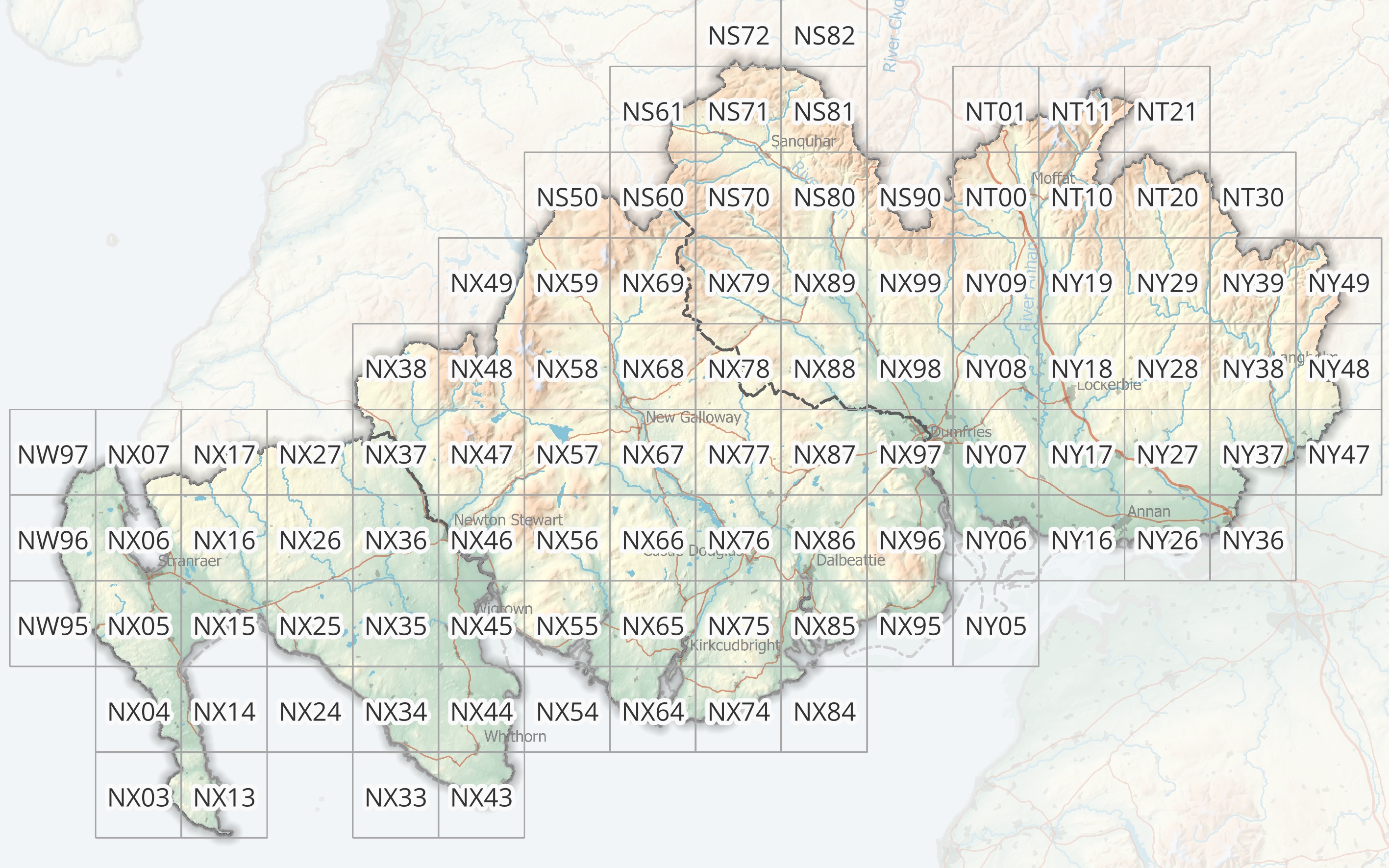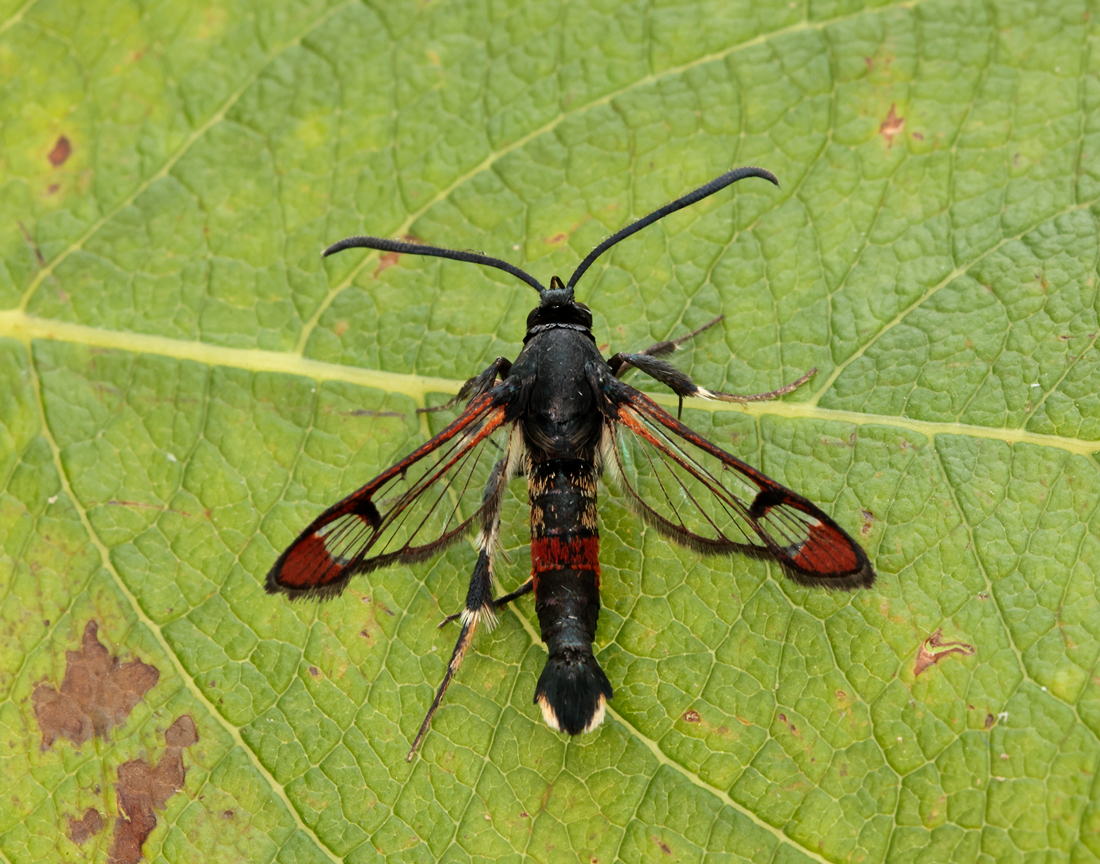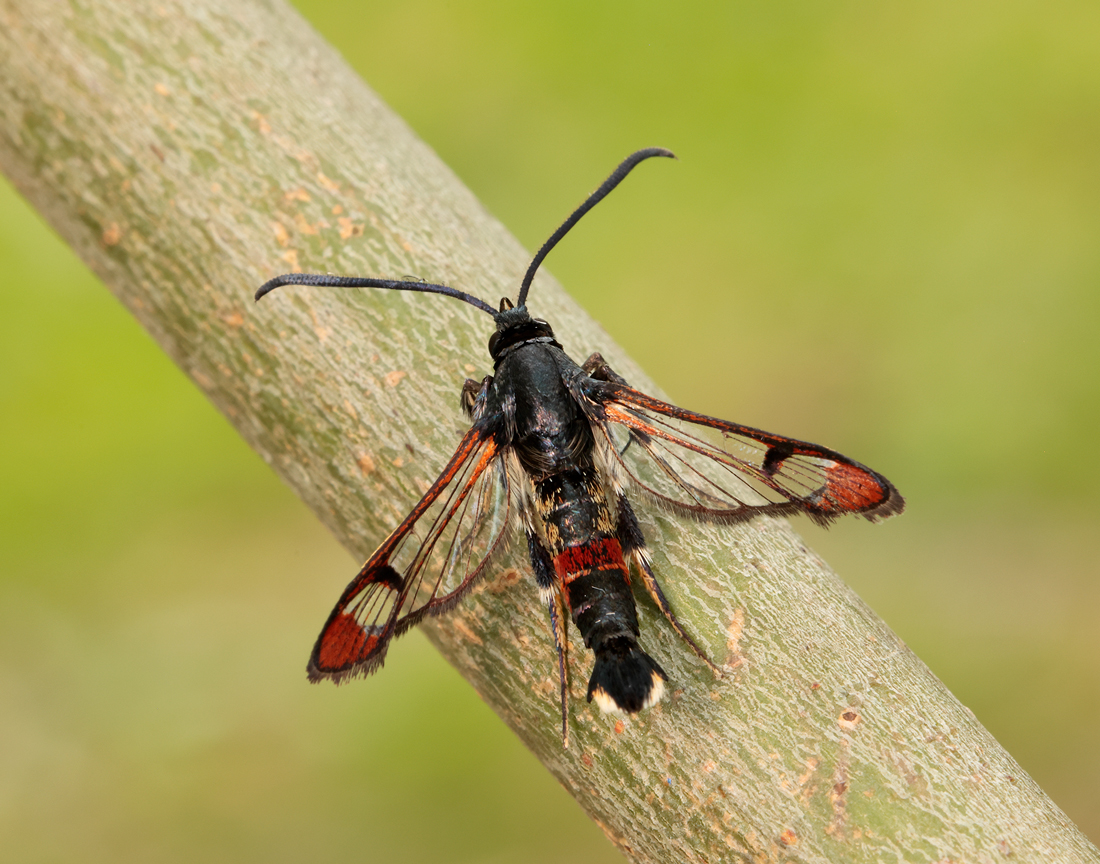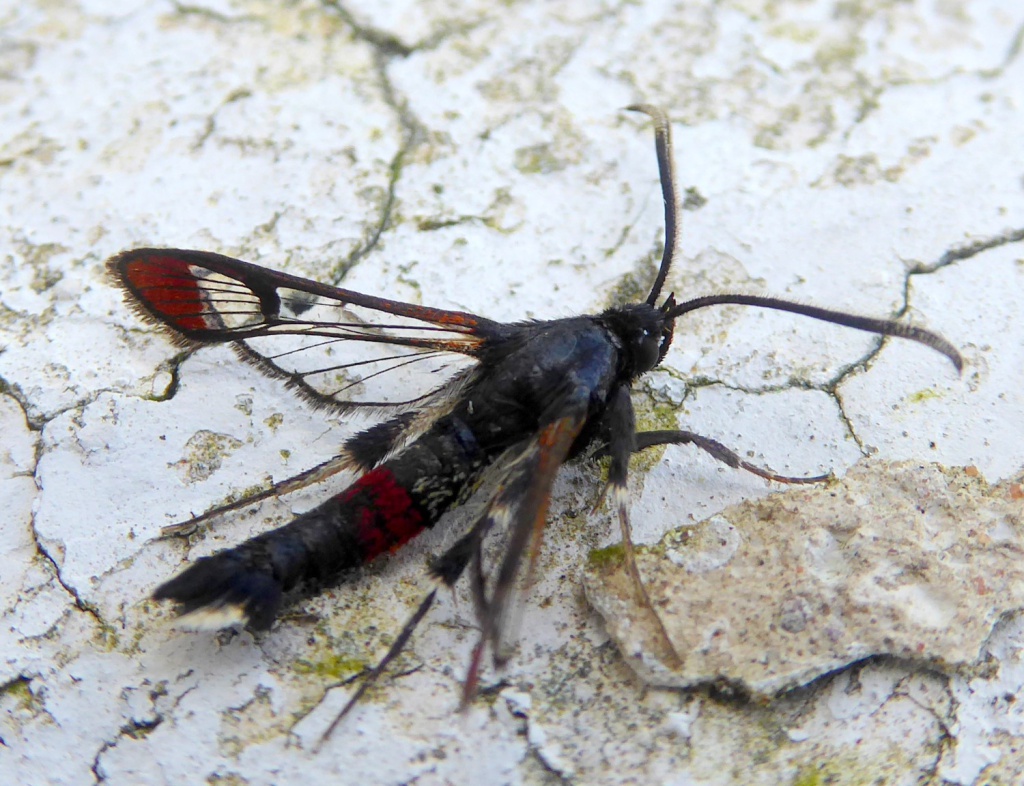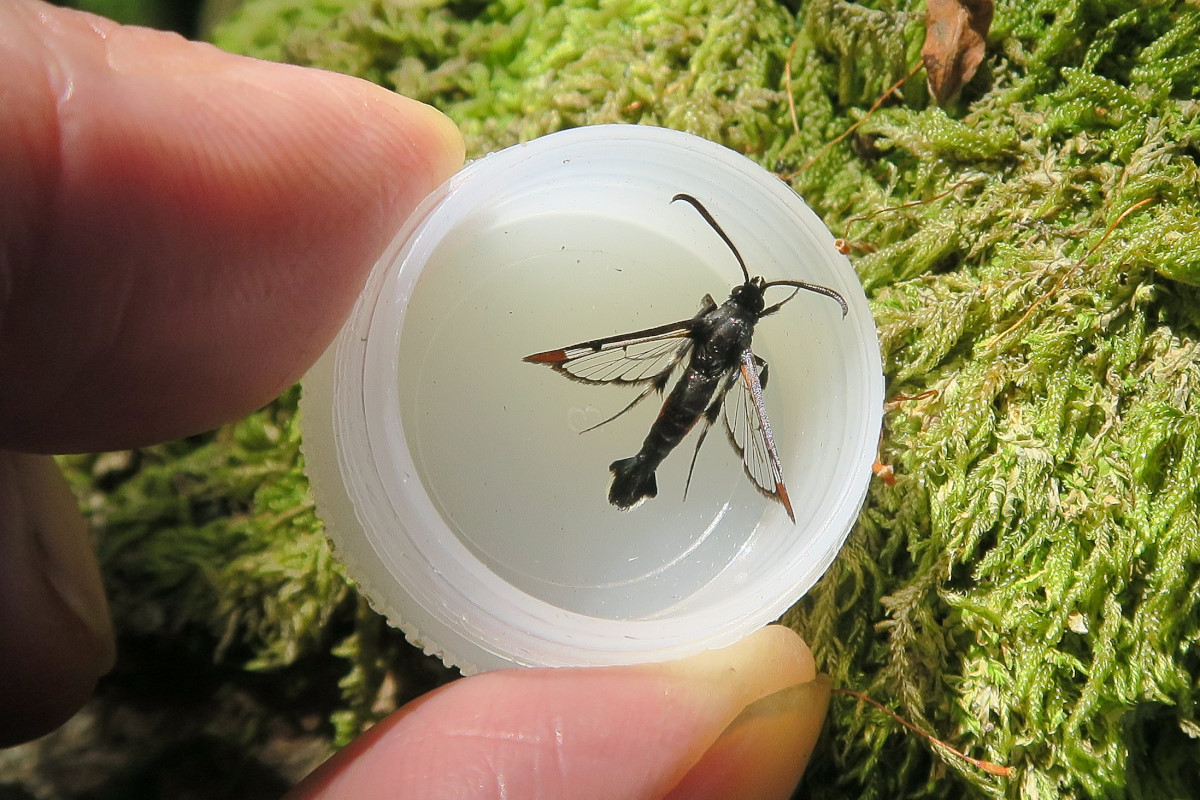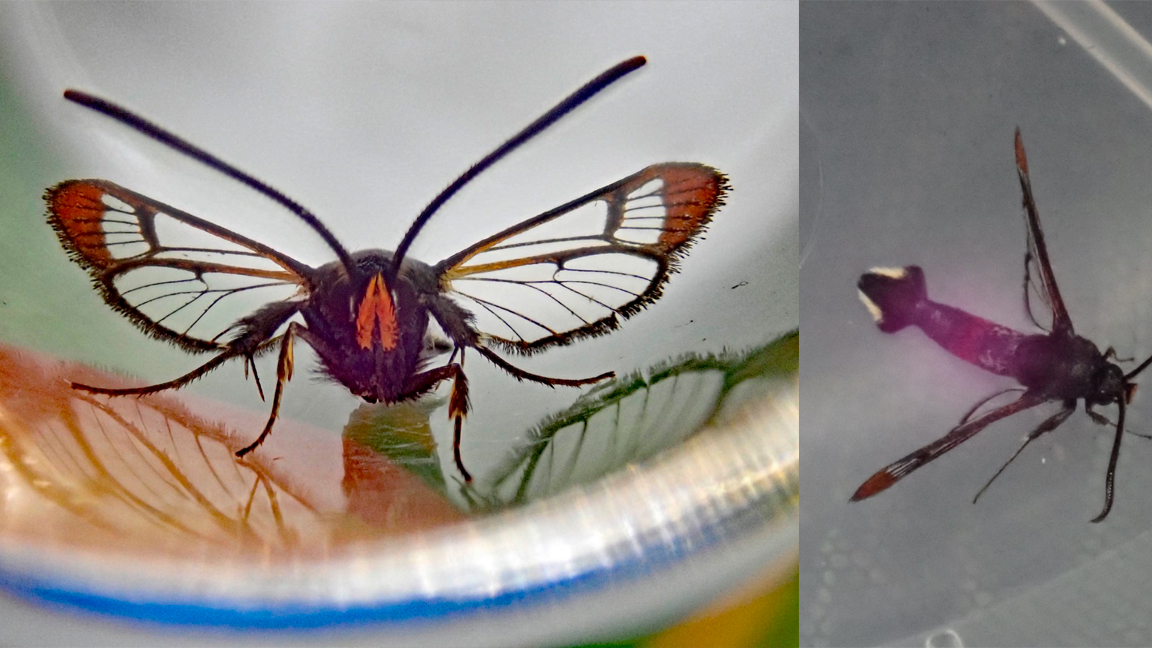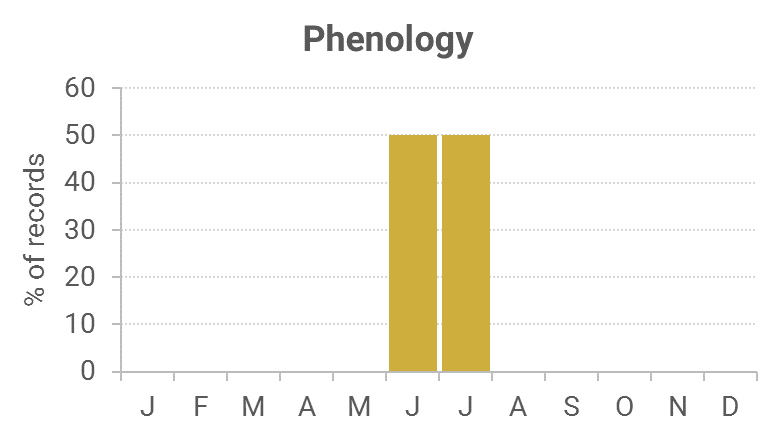See also Moth of the Week (20/06/2023).
Previously considered likely extinct but the use of pheromone lures has shown the continued presence of the species in the region.
Identification
Combination of a dense patch of red scales at the tip of the forewing and a broad red band on the abdomen is diagnostic..
Recording Method.
A day-flying moth but rarely seen. Males can be attracted to pheromone lures.
Life cycle
One generation. Overwinters as a part-grown larva. Larva August to May, when it lives inside the trunks, branches or stems of the foodplant.
Larval foodplants
Osiers and willows.
Habitat
Found in damp woodland with mature willows.
History
R. S. Gordon (1913) stated that: ‘I have never seen the perfect insect. Took several larvae and pupae in willow on islands, Drumwalt Loch, Mochrum on 27th June 1898, and in willows along Malzie Burn, 1st July 1899.’ These records were from Wigtownshire.
MOGBI (1985) with their distribution map record the species in Dumfriesshire which would be the record by F. W. Smith and Arthur Duncan from Closeburn in 1942.

